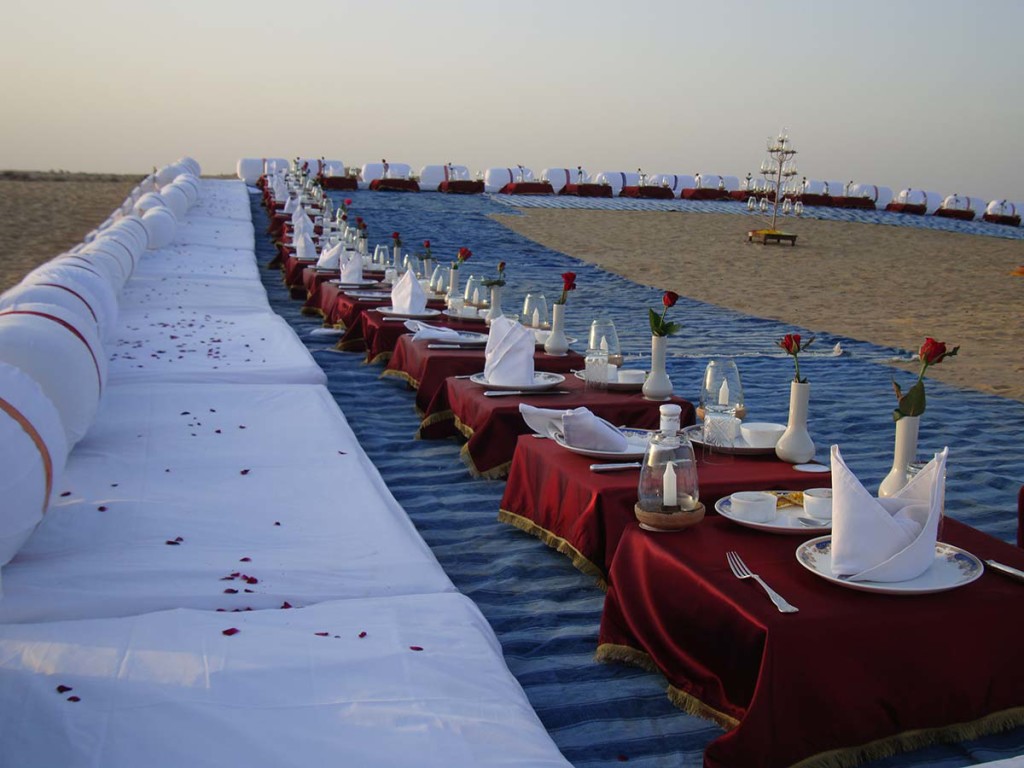We make our way out to the desert on camel carts – I the only sore-thumb Westerner amid chef Vivek Singh and his appointed motley crew brigade (put together from some willing travellers from our vessel – the Maharajas’ Express). As we’re pulled along by the plodding creature, children greet us with precocious shouts of “hello, how are you?” and general giddiness, laughing I am sure, at my pink-tinged face and its situation – only a matter of centimetres from the camel’s larger-than-life genital accoutrements.
After a bumpy, dusty and colourful ride we arrive at our destination – some sand dunes in the desert of Bikaner, and Vivek sets about sussing out the kitchen set up – some prep tables, gas stoves and grills – as it’s our task to prepare some traditional Indian canapés for the rest of our train. I take in the scene that surrounds us – fairy lights, cushions, linen-covered kneeling tables and standing candelabras – all set in the hazy, balmy beauty of the desert at dusk.

As usual, I’m bothered by the nagging of my bladder – but I don’t need to worry, the desert facilities are more than adequete.













